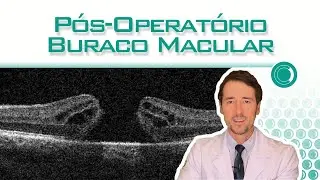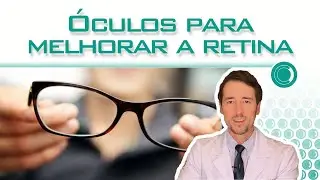Four ways to prevent retinal detachment
Hello, everyone! This is Mário Bulla, and welcome once again to Retina e Vítreo, the most comprehensive retina channel on YouTube. Today we're going to talk about an extremely important topic: preventing retinal detachment.
First of all, it's important to point out that we can't always prevent retinal detachment, as it can occur unexpectedly, even without apparent risk factors. However, there are measures that can help to significantly reduce this risk.
*1. Pay attention to the initial symptoms*
The first signs of a possible retinal problem, such as the famous "floaters" (dots or spots that seem to float in the field of vision), should not be ignored. These symptoms can indicate vitreous detachment, a condition where the jelly that fills the eye separates from the retina. If this separation causes a tear in the retina, there is an increased risk of detachment. Therefore, when you notice these symptoms, seek immediate assessment by an ophthalmologist. Identifying and treating retinal breaks with laser photocoagulation can prevent detachment in up to 90% of cases, although there is no absolute guarantee.
*2. Make regular appointments, especially if you have risk factors*
If you have risk factors, such as a family history of retinal detachment, high myopia, or have suffered eye trauma, it is essential to visit an ophthalmologist regularly. These evaluations allow for the early detection of degenerations or ruptures in the retina. Laser photocoagulation in compromised areas may be indicated to prevent retinal detachment, minimizing the risk of future complications.
*3. Protect your eyes from trauma*
Avoiding situations that could cause trauma to the eyes is an essential preventative measure. Wear protective goggles if you work in dangerous environments or practice contact sports such as martial arts. Direct impact on the eye can lead to retinal damage and increase the risk of detachment. Protecting your eyes is therefore an effective form of prevention.
*4. Control systemic diseases such as diabetes*
Diabetic retinopathy is a significant cause of retinal detachment, especially the tractional type, where fibrosis formation pulls on the retina. This type of detachment is more serious and can require complex surgery. Strictly controlling diabetes, maintaining adequate blood glucose levels and carrying out regular eye examinations is crucial to preventing this complication. Adopting a healthy lifestyle, with a balanced diet and regular exercise, benefits both diabetics and non-diabetics, reducing the risk of retinal detachment.
**Conclusion
To prevent retinal detachment or reduce its chances, follow these guidelines: seek medical attention when you notice symptoms such as floaters, avoid eye trauma, keep regular appointments with your ophthalmologist, especially if you have risk factors, and manage your diabetes well. Remember that nothing in medicine is 100% guaranteed, but these measures can make a big difference.
Don't forget to leave your like, subscribe to the channel and leave your questions about the retina in the comments. See you in the next video on the Retina e Vítreo channel!
This video and its comments are not a substitute for a doctor's consultation and are for educational purposes only. They should not be used to make decisions, for which a face-to-face consultation with a specialist doctor is necessary.
Author:
Dr. Mário César Bulla
Cremers 28120
Ophthalmologist - Retinologist
www.clinicabulla.com.br
www.especialistaemretina.com.br
Instagram: @retina.bulla
Video URL: • Como prevenir o descolamento de retin...
@Retina e Vítreo
#retina
#ophthalmology
0:00 Prevention of retinal detachment.
0:35 Is it possible to prevent retinal detachment?
1:10 Vitreous detachment and retinal rupture.
1:30 Laser photocoagulation of the retina to prevent detachment.
1:50 Floaters and retinal detachment.
3:15 Risk factors for retinal detachment.
3:40 Avoiding accidents.
4:05 Diabetes and retinal detachment.

![[FREE] Stunna Gambino Type Beat](https://images.mixrolikus.cc/video/zw6_4HHp2Cs)





























